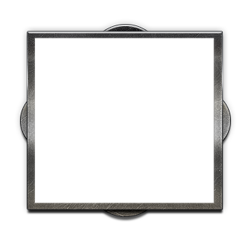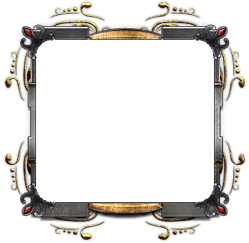...then the tortured iron whimpered,
Oh, oh good smith Ilmarinen,
Do please take me out of here
From this torment of red fire!
~The Kalevala, "The Healing of Väinämöinen"
History
The history of metallurgy is written almost entirely in two alloys, mixtures of at least one pure metal and one other element. Bronze, a mixture of copper and a little tin, was probably the first intentional alloy ever prepared. Iron, when mixed with a little carbon, becomes steel. In a convenient addition to their historical significance, these two alloys display two completely different forms of strengthening that make them good models for teaching metallurgy. Bronze is made harder and tougher by substitutional solution strengthening, while steel employs interstitial solution strengthening. We’ll discuss these below in simple terms, but first we have to cover some slightly technical preliminaries.

Refining iron in the bloomery process - Wareham Forge
Properties of metals
In addition to intrinsic material properties such as melting point, there are several important characteristics of metals and their alloys that metallurgists like to discuss when comparing one to another. Briefly summarized, these are as follows:
Yield Strength is the force you must apply to a metal, via a hammer blow or other means, before it begins to flow like a plastic, resulting in permanent deformation. At its simplest, this is a dent.
Tensile Strength is the maximum force you can apply to a metal before it will simply fracture or crack. This is related to the hardness of a metal or alloy.
Ductility is how far the metal will stretch before it fractures. This is very important for drawing wire.
Resilience is the product of the yield strength and the ductility at yield. This is a little more complicated, but it's related to how much energy a metal can absorb and release. Highly resilient metals make good springs.
Toughness is similar to resilience, but also takes into account plastic flow after the yield strength. Basically, toughness is what it sounds like- a measure of how hard something is to break.
There are many ways that these properties may be modified and enhanced, even in the same alloy! We'll talk about a few of these processing methods below.
How atoms fit together
As you probably heard in school, it was the ancient Greeks who proposed that all matter was made up of incredibly small, irreducible units: what we call atoms. In crystals, such as diamond, rock salt, or all metals, these atoms are arranged in regular and symmetric arrays. You can visualize as a jar full of marbles or bearings in which each sphere nests among the others; tilt the jar, and they will slide over one another. Atoms in a block of metal also slide when they’re deformed, and the regular spacing of the crystalline structure helps metals move in predictable patterns.
The exact form of the array is different for every crystalline material. One reason for this is that atoms of different elements have slightly different sizes. If you’ve ever looked at a periodic table, the elements towards the top and the right generally have a smaller atom than their lower and leftward neighbors of different atoms. Even atoms of the same material will grow in size as the temperature increases. This is why things expand when they’re heated and contract when they’re cooled.
But wait! Why does water expand when it cools and freezes? The transition from liquid to solid is a phase transition. Many materials have a similar behavior at high temperatures. Normally this doesn’t matter for what we see at room temperature. In the case of alloys like steel, though, the high temperature crystal structure can be retained by quenching. We’ll talk more about that in a minute.
Substitutional alloys: Bronze

Molten Bronze Casting - IAMS
In substitutional alloys, such as bronze, the ingredients that form the mixture have atoms of roughly similar size. Tin’s atom is about 10% larger than copper’s- bigger, but not so big that it causes the mixture of the two to separate. You can mix up to about 7 parts copper to 3 parts tin and still form bronze; much more tin, and you will form a mixture of bronze + extra tin. Bronze retains the same crystal array as copper, and the effect of the larger tin atom on the can be imagined as speed bumps on a road or waves on a lake. As bronze is deformed, atoms slide over each other. The larger tin atoms interrupt and slow down the motion of all the atoms, and the bronze alloy becomes harder to deform than pure copper. The yield strength increases, ductility slightly decreases, and toughness greatly increases.
Interstitial alloys: Steel
In interstitial alloys, such as steel, the ingredients that form the mixture have atoms of very different size. Where bronze had alloying atoms of tin that were only slightly larger than the copper, steel has alloying carbon that is less than half the size of the majority iron. These carbon atoms sit in what would otherwise be empty space between iron atoms, or what metallurgists would call interstitial space. The result is that the iron changes crystal structure at higher temperatures (700 C and above).
In steel, the smaller carbon atoms are more like potholes than bronze’s “speed bumps”, but the effect is the same. The smaller carbon atoms interrupt and slow down the motion of all the atoms, and the steel alloy becomes harder to deform than pure iron. As in bronze, the yield strength increases, ductility decreases, and toughness greatly increases. All of these effects are slightly larger than in bronze, making steel a slightly superior alloy (and one for which supplies are much easier to find and process).
Heat treating of steel
It is carbon that makes steel able to be altered by heat and cold, and it is carbon that gives steel its knife edge. To go into depth could (and has) filled books, but I will attempt a very brief description here: iron is difficult to process because it is hard to melt in a simple furnace. Adding carbon lowers the melting point while making the resulting metal alloy harder but more brittle- the lowest melting point occurs around 4% carbon, and the hardest and most workable steels have less than 1%. The specific alloy and crystal structure that forms with less than 4% carbon and at temperatures of greater than 700 C is called austenite.
When cooled slowly from temperatures above 700 C, steel returns to the low temperature iron structure, with the release of carbon from the iron crystalline lattice. The alloy forms bands of iron and iron carbide (Fe3C). This is the source of the dark wavy patterns in Damascus steel and in some fancy chef’s knives, and is a hard and tough material in its own right. Very small additions of carbide-forming elements such as vanadium or molybdenum assist the formation of the iron/iron carbide bands (known as pearlite or bainite, depending on size and method of formation). Ores with small amounts of these carbide formers, undetectable to the ancients, would have given steels from their mines sought-after advantages in industry and warfare. [1] Steel made from these ores would be a sought-after commodity. Indeed, in the ancient world treaties were sealed and wars were fought over the supply of wootz steel, which possessed the needed qualities.
When cooled quickly, by quenching the hot steel in water, brine, or oil, the iron crystal locks the carbon in place, retaining the high temperature crystal structure. The resulting alloy is hard and brittle martensite, and can be tempered at lower temperatures (400 C) to form hard and flexible steel. Overtempering by leaving the steel in the fire too long will soften the blade and require the smith to repeat the process from scratch.
Metals and alloys in antiquity
The Bronze Age began around 3000 BCE, when humans first started smelting copper from ores and by chance formed an “accidental bronze” from a copper ore with additional tin. Over time, the essential elements of copper and tin were identified separately, and trade developed in tin ores. Tin is far more rare than copper in the earth’s crust- there are major deposits in southeast Asia and in the eastern Atlantic from Spain to England, but little aside from that was available to ancient society.
 This chart shows how alloying tin into copper and carbon into iron makes bronze and steel: two alloys that are greater than the sum of their parts.
This chart shows how alloying tin into copper and carbon into iron makes bronze and steel: two alloys that are greater than the sum of their parts.
Bronze performs much better in metallurgical applications than its constituents tin and copper. Because of its substitutional alloying effect, bronze is even stronger than iron. Mild steel is better than bronze, but not by much. For those civilizations, such as China, with a ready supply of tin ore, there would be little reason to develop the new tools and hotter furnaces required to refine and forge steel to replace the easily accessible bronze.
Once the change to steel began, however, the advantage in eventual combat would be unmistakable. Some historians believe that the Spartan’s early adoption of steel lent them an advantage in battle as decisive as their legendary training; one physicist who worked on the atomic bomb compared that weapon’s advantage to the one Sparta possessed in their steel weapons. [2] For the enterprising smith, there can be no other option but to research the advanced furnaces and forging techniques needed to make steel weapons.
In CoE, as in our historical world, just 3 metal ores would suffice to drive a complex world of crafting weapons and armor. Just two more could make the world nearly as complicated as the one we know today, but perhaps that's a story for another time...
J.D. Verhoeven, A.H. Pendray, and W.E. Dauksch, “The Key Role of Impurities in Ancient Damascus Steel Blades.”Journal of Materials 50[9] (1998) pp. 58-64 Link
A. O’Connor, “Lyle Borst, 89, Nuclear Physicist Who Worked on A-Bomb Project,” New York Times, August 12, 2002 Link
If you found this post interesting and informative, please check out the series!





 This chart shows how alloying tin into copper and carbon into iron makes bronze and steel: two alloys that are greater than the sum of their parts.
This chart shows how alloying tin into copper and carbon into iron makes bronze and steel: two alloys that are greater than the sum of their parts.







